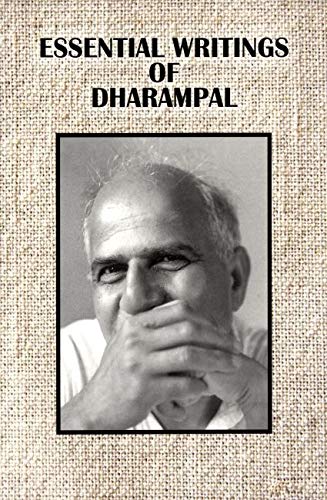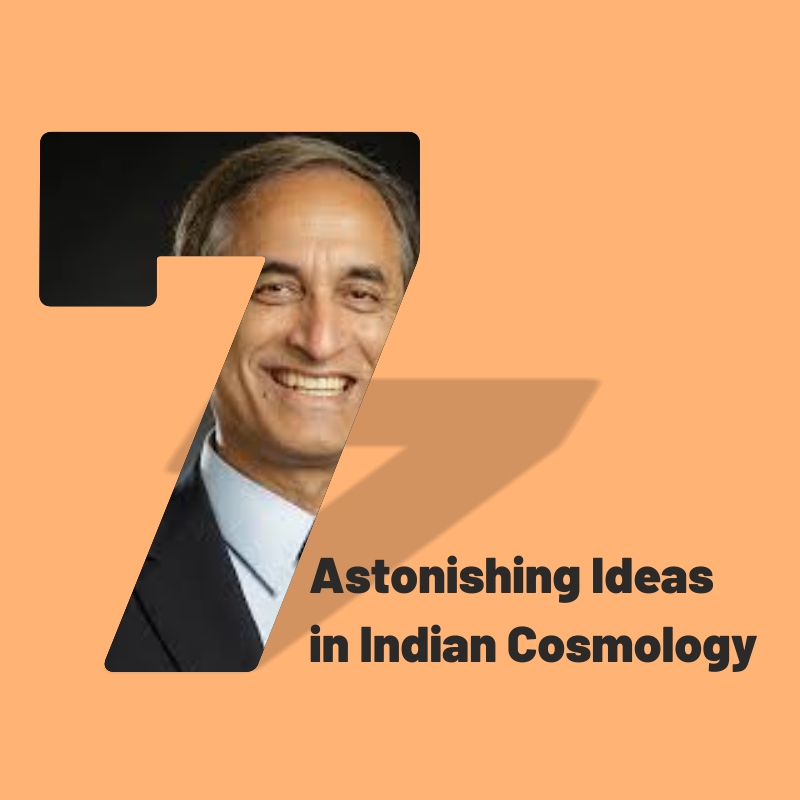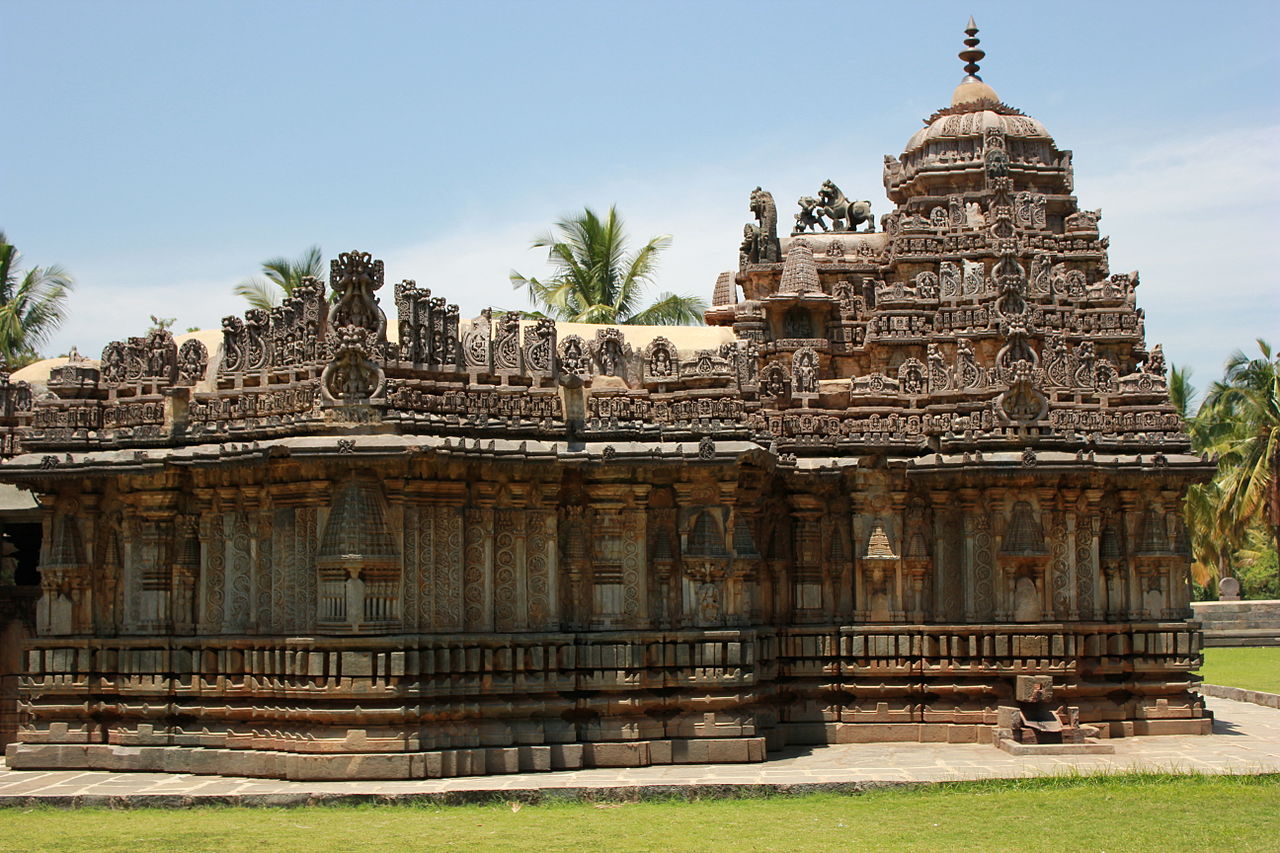- Visitor:21
- Published on:
In the Footsteps of Hind Swaraj. The Oeuvre of the Historian and Political Thinker Dharampal – 4
Dharampal initiated a process of delegitimising the master narrative of the rise of the west, in particular concerning the domains of science and technology.

What did this life of research actually produce? Broadly speaking, the archival collection assembled over a decade and a half was tripartite in perspective:
Firstly, it contained documents (in particular, commissioned surveys) dating mainly from the late 17th century up to the middle of the 19th century relating to descriptions of different regions of India, its physical landscape, the manners of its people, their public life, festivals, cultural and educational institutions, the nature and extent of agricultural and industrial production, of sciences and technologies. In short, this diverse documentary material mapped out the cultural, social and political history of the subcontinent in the pre- and early colonial period.
Secondly, reams of official correspondence between authorities in Britain and India (with detailed instructions, sometimes controversial enough to be copiously debated) delineated the instrumentalities and modalities for the preparation and consolidation of the British conquest of India, in which sufficient evidence is to be found of the long arm of the British state from the 17th century onwards – a fact which was emphasised by Dharampal over and over again. For, from his reading of the archival records, the East India Company [EIC], empowered from the very outset in 1600 by royal charter, was acting in accordance with instructions from the British State. From the middle of 18th century the EIC was explicitly carrying out orders of the British government, exemplified concretely by parliamentary acts from 1784 onwards, after the establishment of the statist Board of Control.[1] The official records, labelled the Board’s collection (of correspondence between the Directors of the East India Company and the Commissioners of the Board of Control, including reports, instructions, etc.), contained details about the process of subordination and control of its rulers, of the recruitment for the army, and of the establishment of a government apparatus whose structure and function continued more or less unchanged after Independence.

Thirdly, the documentation comprises statistical data with regard to economic policies and measures, including protracted deliberations about the amount of land revenue, the manner in which it was levied, with information also about numerous other taxes and levies, such as those on beggars, which were introduced more as disciplining measures for controlling and harassing the population.[2] Related to this domain are extensive documents underscoring the crucial need for – and the heavy reliance on – forced labour, in particular for the construction of railways and roads, as well as the supply of bullock-carts and bullocks for the transportation of the British army and administrative personnel.
Fourthly, this material is supplemented with evidence of continued Indian resistance which took various forms throughout the period of colonial rule. Fifthly, there is a select collection of documents concerned with indological research, which highlights the rationale behind such scholarship, initiated by Warren Hastings, the first Governor General in 1784.[3] Lastly, a sizeable set of documents, beginning in the first decade of the 19th century, provides details of British government policy concerning the Christianisation of India which was initiated in 1813 after lengthy parliamentary debates.[4]
This, in a nut-shell, constituted the substantial contents of Dharampal’s efforts at remapping Indian history from the 17th into the 20th century, and thereby contesting the hitherto historical master narrative. Only some of the material has become known to the public through three pioneering books which have now become classics within the framework of the recent ongoing reappraisal of the early modern period. The topics of these publications were determined both by the wealth of archival material on the subject, as well as by urgent concerns of the post-Independence period: His first two books, both published in 1971, on Indian Science and Technology in the 18th century[5] and Civil Disobedience in Indian Tradition[6] created quite a stir.[7] The first title comprises a discerning selection of British primary documents dating from the 18th and early 19th century relating to applied sciences and technologies as observed in various regions of the subcontinent. In his informative and well argued introduction (reproduced in this volume), whilst contextualising the historical sources, Dharampal also explains his choice of the time-frame – 1720 until 1820 – as follows:
“Practically all European scientific and technological accounts relating to the sciences and technologies of non-European countries (including the ones reproduced here) are an outcome of the seventeenth and eighteenth century European quest for usual knowledge in these fields. […] It is in the context of this widening horizon, coupled with growing sophistication and the urgent need (partly resulting from constant warfare in which Europeans were engaged during the greater part of the eighteenth century) for materials and processes that accounts like most the ones presented here were written and submitted by individual Europeans to their respective patrons. It is thus in the European writings of the period (i.e. from 1720 to 1820) that one discovers the European observed details about non-European science and technology as well as about the societies, institutions, customs and laws of various parts of the non-European world. Before this period the European ability to comprehend this world was limited; and after about 1820 the knowledge and institutions of the non-European world began to have much less usefulness to the problems of Europe. Further, by the 1820s, most parts of the non-European world are no longer themselves. Their institutions, sciences and technologies are not what they were 50 or 100 years earlier, and have met the same fate as their political systems and sovereignty. By the 1820s or so, most of the non-European world had become, at least in European theory and most history texts, if not altogether in actuality, ‘backward and barbarian’.”[8]
Indeed, by focusing on 18th and early 19th century British reports on Indian scientific and technological achievements, Dharampal initiated a process of delegitimising the master narrative of the rise of the west, in particular concerning the domains of science and technology. This was a radically innovative intellectual perspective in the 1960s which was only to acquire more widespread currency a few decades later. His incisive insights about the (often inadequate) modalities and yet far-reaching repercussions of European intellectual and political interactions with the Indian subcontinent underscore the formers’ deleterious impact for the latter. Resulting as these negative repercussions did from a historical process of intercultural ‘entanglement’,[9] Dharampal, from his critical perspective, underscored the need for undertaking a more historically nuanced analysis in the field of transcultural studies that have gained such academic prominence during the last decade.
Source: Gita Dharampal, “Introduction” in Essential Writings of Shri Dharampal (New Delhi: Publications Division, Government of India, 2015), pp. 11-15
This extract has been published with permission from Publications Division, Government of India
[1] In 1784 the British parliament passed an act, which constituted a Board of Commissioners for the Affairs of India (commonly referred to as the Board of Control) with a British cabinet minister as its president. Initially the British Prime Minister was also a member of this Board. For most of its 74 years of existence (1784-1858), the Board had six members, all of them British privy councillors, out of whom three were cabinet ministers. It was this Board, which governed India from 1784 to 1858 when a British Secretary of State for India replaced it and India began to be formally considered by Britain as a part of the British Empire. During the 74 years (1784-1858), while the East India Company (EIC) prepared the initial drafts of all the instructions to be sent to India – in any of the governmental departments either at the Presidency levels or at the all-India level – the Board of Control in every single case was responsible for the finalisation and approval of each and every instruction. Yet the instructions, though finalised and approved by the Board, were, however, formally conveyed to the British Presidency governments in India under the signatures of the Chairman and Deputy Chairman and some twenty members of the Court of Directors of the EIC. In a way the job of this Court was similar to the job of a under secretary to the Government of India today, who ordinarily conveys all governmental orders and instructions under his own signature, in the name of the President of India.
[2] Dharampal has collected substantial material on taxes levied on trades and professions known as mohturpha and veesabuddy in South India; it constituted a complicated graded tax to be paid by all non-agricultural people; for more details, cf. his extended article: “Erosion of Norms and Dignity, and the Origins of Callousness, Pauperisation and Bondage in Modern India”, first written in 1981, and published in: Rediscovering India, op. cit., pp. 27-92.
[3] Cf. the founding of the Asiatic Society of Bengal (January 1784), with William Jones as the primary British orientalist.
[4] The chief proponent for the ‘Propagation of Christianity’ was William Wilberforce whose two crucial speeches (on 22.06. and 01.07.1813) have been republished and commented in Dharampal: Despoliation and Defaming of India: The Early Nineteenth Century British Crusade, Bharat Peetham, Wardha/Other India Press, Goa, 1999, pp. 49-61, 63-146
[5] With the subtitle Some contemporary European accounts, Impex India: Delhi, 1971
[6] Sarva Seva Sangh Prakashan: Varanasi, 1971
[7] In particular, Indian Science and Technology was widely reviewed, and is considered as a seminal study for gaining insights into Indian scientific and technological achievements in the early modern period.
[8] Indian Science and Technology in the Eighteenth Century, op.cit,, extracts from pp. XXVII-XXX;
[9] In the last decade, postcolonial studies have described the historical process of intercultural interaction in terms of entanglement, and thereby highlighted its dynamic, hybrid qualities with positive overtones; contrastively, Dharampal is fully cognisant of its overriding negative repercussions for colonised societies.
Center for Indic Studies is now on Telegram. For regular updates on Indic Varta, Indic Talks and Indic Courses at CIS, please subscribe to our telegram channel !
- 10 min read
- 0
- 0










